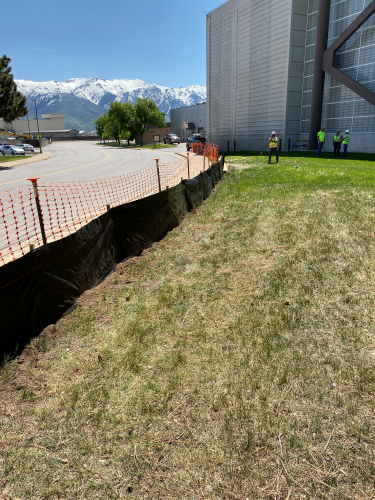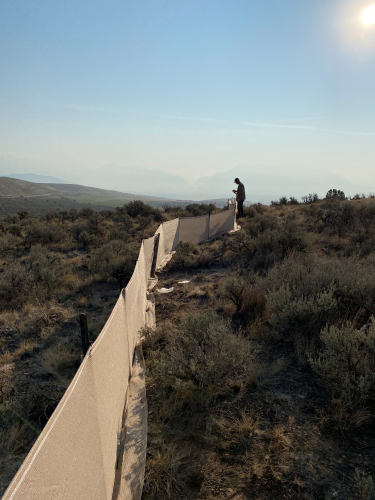No construction site is complete without a silt fence. Silt fences are an essential Best Management Practice (BMP) and a key part of any erosion control plan. Proper implementation of a silt fence is essential to ensure that pollutants do not end up in the watershed. Most jurisdictions have policies in place that require a silt fence. Not complying with these policies can lead to fines and blocked sewers and streets.
Silt fences are a popular BMP because they offer a simple and low-cost solution to erosion control. They are temporary barriers put up to prevent erosion from the construction site. While on the surface, silt fences seem simple, it isn’t recommended to install a silt fence without help from a professional. Installing a silt fence requires a good understanding of erosion control practices and landscaping.
The first step of putting up a silt fence is identifying where it needs to be located on the construction site. This is typically done at the base of a slope so the fence can catch the silt from the disturbed ground. Next, a 6” trench is dug out where the fence will go. Wooden or metal stakes are then placed in the ground, and a geotextile fabric is attached to the stakes. Dirt is backfilled into the trench, covering part of the fabric and anchoring it.
There are three main types of silt fences type A, B, and C. Type A uses 36-inch fabric and has a minimum post size of 4 inches. Type B uses 22-inch fabric and has a post size of 3 inches. Type C is the most industrial of the silt fences using a 36-inch fabric and posts that are 40 inches long. What kind of silt fence is needed based on the project’s demands? A silt fence is usually good for a year, with minimal upkeep needed before it should be replaced.
Silt fences are practically mandatory at construction sites these days. Our team of erosion control experts can help to install any type of silt fence where needed. With years of experience installing silt fences at countless locations, ECS knows how to get the job done. Next time a construction project is getting underway, could you think of how we can help you to get it approved?
Written by Jacob Willson





